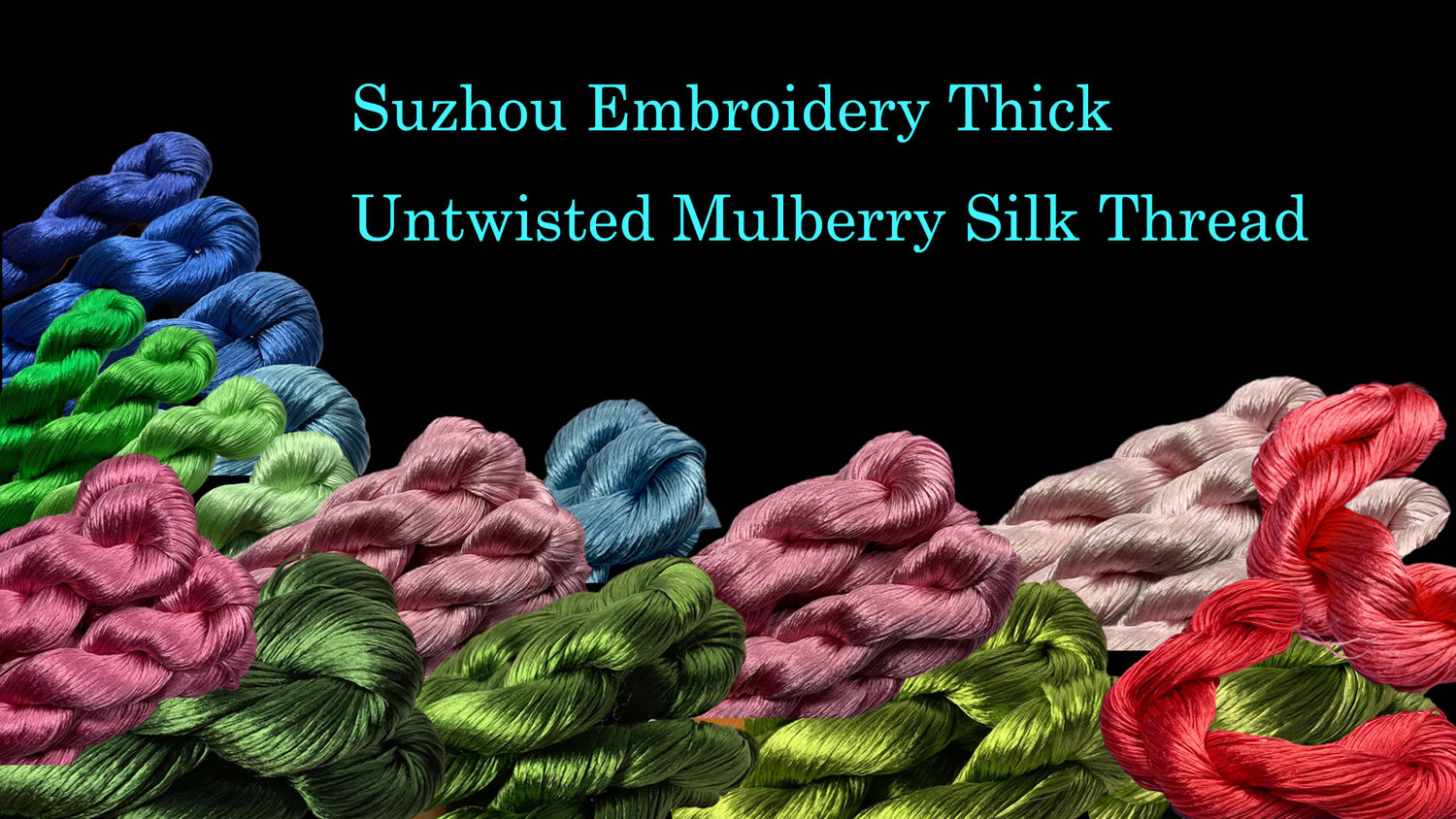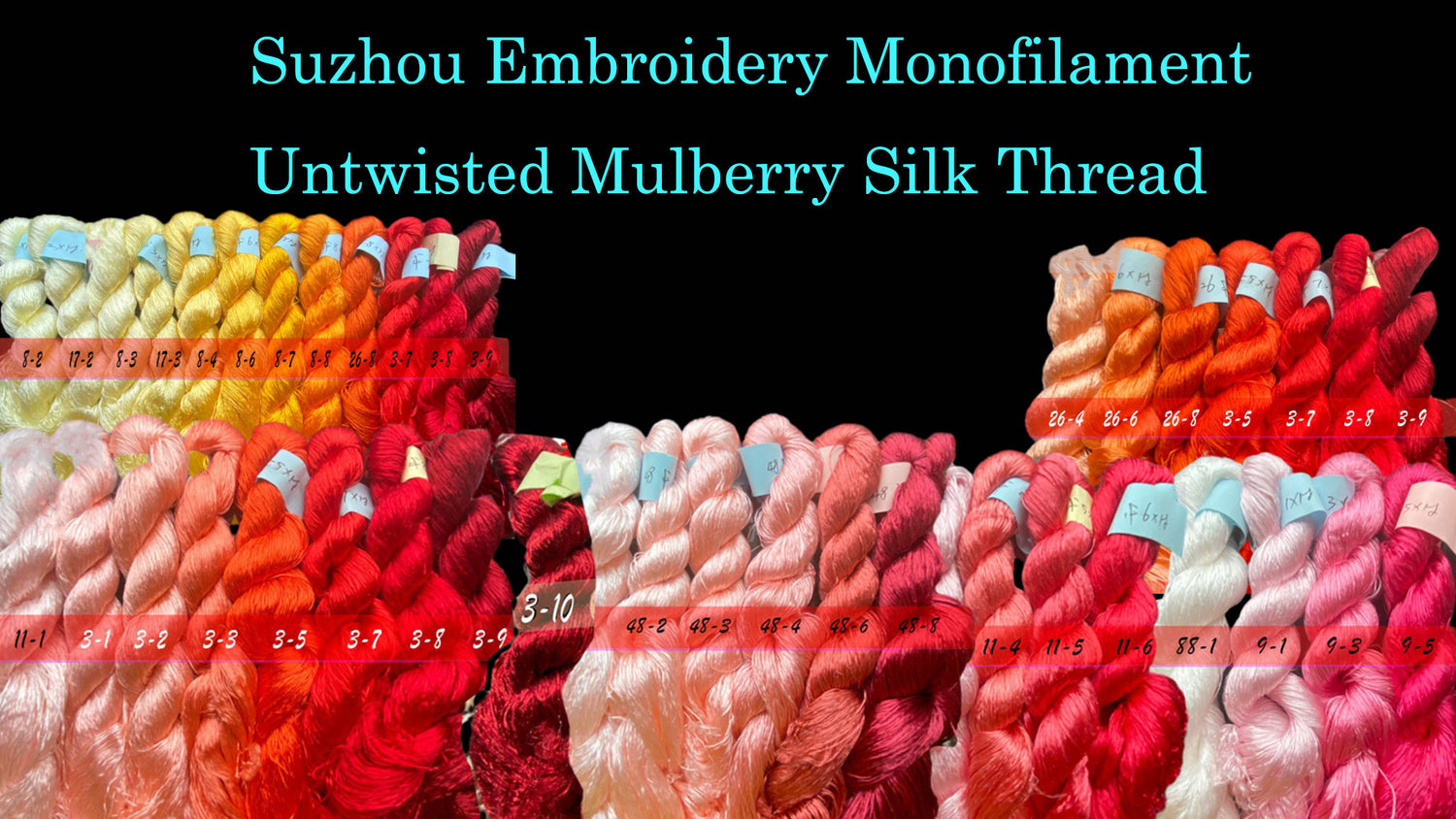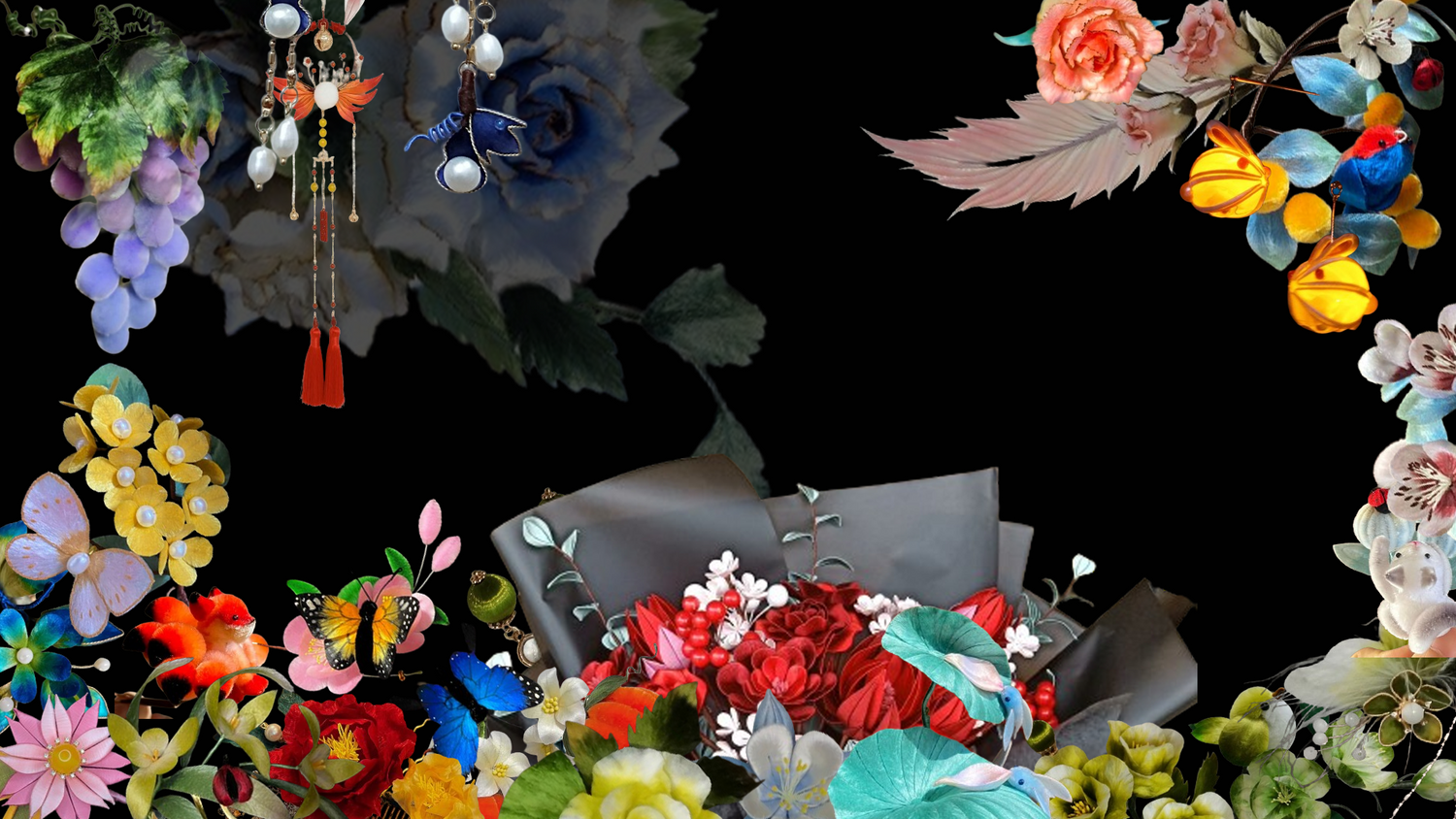
Decorative Threads and Dyeing for Chanhua
Share
3.1.3 Adding Decorative Paper Strips or Decorative Threads
Adding decorative paper strips or decorative threads to Chanhua can enhance its beauty, especially in some Chanhua designs where decorative lines or threads create unique decorative effects. The following images show the effects of adding decorative paper strips and decorative threads to Chanhua.

To add decorative paper strips to Chanhua, first cut the decorative paper strips to a width proportional to the size of the Chanhua pattern. After cutting, add the decorative paper strips to the card paper. Specifically, press one end of the paper strip with silk thread and wrap a portion, then flip the paper strip up and wrap it along the card paper, exposing the paper strip on the surface of the Chanhua. Next, cover the surface of the Chanhua with the paper strip, leaving a certain length of the paper strip and wrapping it with silk thread. Repeating the above steps will result in Chanhua with intervals of decorative paper strips on the surface.

For some specially shaped Chanhua patterns, adding metal threads during the production can create a more distinctive effect. The image below shows a Chanhua pattern with silk threads arranged radially. When adding metal threads, wrap the metal threads and silk threads together on the wire, and press the metal threads tightly with your hand while wrapping along the card paper to prevent slipping.

3.1.4 Dyeing
Section 2.1.2 introduced the common dyeing tools for making Chanhua. This section will explain the specific steps for dyeing Chanhua. Dyeing Chanhua usually includes dyeing the threads before making and dyeing the finished Chanhua. Dyeing threads means dyeing the silk threads to the desired color before making Chanhua and then drying them. Dyeing the finished Chanhua involves using white silk threads to complete the Chanhua and then hand-painting it with a brush and dye. Below is a brief introduction to the specific steps of these two dyeing methods.
1. Dyeing Threads Before Making
The following steps explain dyeing threads using powdered dye as an example:
 a
a
- a. Take 3 spoonfuls (about 3g) of red powdered dye.
 b
b- b. Pour the powdered dye into a dilution bottle, add 30ml of hot water, and stir or shake well to mix the dye with the water, avoiding clumps.
 c
c- c. Prepare a bundle of white silk threads, soak them in water, wring out the excess water, and use a dropper to apply the dye to one end of the silk threads.
 d
d- d. Rub the silk threads with your hands to ensure even coloring. After dyeing one end, wring out the excess water from the silk threads and let the dye seep to the middle of the threads.
 e
e- e. Hang the dyed silk threads to dry, resulting in gradient-colored silk threads. Adding different colored dyes during the dyeing process can create more colorful silk threads.
2. Dyeing the Finished Chanhua
The downside of dyeing silk threads is the inability to control color changes during wrapping. Due to variations in Chanhua patterns, the gradient effects of the silk threads may not appear as intended. Therefore, to match the color of the Chanhua with the pattern, dyeing can be done after wrapping.
Using solid pigments as an example, wet the brush with water, apply it to the solid pigment to pick up the color, and gently brush it on the surface of the white silk threads wrapped Chanhua. To deepen the color, repeat applying the pigment and coloring. Control the brush's moisture, as a too-wet brush will result in lighter coloring. Repeated application may soften the card paper under the Chanhua. Once the coloring is complete, let it dry, as shown in the image below.








